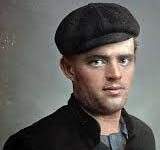The Adventure of Pinocchio | An Analytical Study
The Adventure of Pinocchio | An Analytical Study
The Adventure of Pinocchio | An Analytical Study
‘The Adventures of Pinocchio’ is a novel for children written by Carlo Collodi, an Italian writer of the late nineteenth century. It is from alpha to gamma a romantic and imaginative novel written keeping facts suited to reality. Through this novel, the novelist exhibits the nature of children with their obstinacy, wickedness and disobedience to their parents and elders. The novel is allegorical and metaphorical. The novelist has attributed human qualities to inanimate things and wild beings and makes them personified.
The hero of the novel is not a human being, but a piece of wood with the instincts of a child. Here the novelist personifies the piece of wood. The wood was owned by a carpenter named Master Antonio. But everybody called him Master Cherry because his nose was as red and polished as a ripe cherry. One day the carpenter wanted to make the leg of a table with a piece of wood and began to remove the bark with his axe. Then while he struck the wood then the wood asked the carpenter like a human being.
“Don’t strike me hard”
The carpenter was surprised but could not make out the mystery, so he again struck the wood, then again the piece of wood said:
“Oh! Oh! You’ve hurt me.”
Thus the novelist personifies that piece of wood and along with it, he attributes the supernatural ability to it. The carpenter sold that piece of wood to Geppetto, whose nickname was Pinocchio. Buying the piece of wood from Mr. Cherry, Geppetto made a wooden puppet (doll) of it. As soon as it was ready as a puppet, it began to behave like a living child. He assumes all the qualities of a boy. As a child, it began to behave with childish wickedness, obstinacy and disobedience to his parents.
The novel is deductive. Through the puppet, the novelist, attributing human qualities, reveals that children are generally inclined to wickedness and they like to repeat their wickedness and disobedience to their parents and hence they suffer much in life. The puppet whose name was given Pinocchio by Geppetto is addicted to the same wickedness as a child. So when the puppet was made then it ran away from home. Its father, here Geppetto, ran after him but the puppet was obstinate to run on. As a result, his father was caught by the police and the puppet came back home and burnt one of his legs on fire. Geppetto repaired the leg and selling his coat bought a book of A.B.C. for Pinocchio and sent him to school. But on the way, he was allured by a puppet show and there selling his A.B.C. book, he went into the pandel to enjoy the show. Going there, he himself became an actor as he was called by another puppet that was showing his performance. But the owner of that Puppet arrested Pinocchio. Somehow, he managed to escape from his hand. The manager gave him five coins as a reward as he showed love and goodness to the puppet of the show.
Taking the reward of five coins he walked home, but on the way, a fox and cat allured him to go to the land of Miracle. They, the fox and the cat said to him that in the land of Miracles coins beget coins if the coins are buried in a hole. Being allured by the cat and fox, the puppet, Pinocchio began to walk with them. After walking for many hours, they arrived at an inn. They all ate to the full of their belly and went to sleep. But at midnight the fox and cat fled away leaving the puppet, to pay the bill. The next morning the puppet, paying the bill of the three, ran to follow the fox and the cat. On the way, two robbers attacked him, but at last, he was rescued by a fairy. The fairy said to him that his father would come there and he would meet his father on the way. Hence he went away to meet his father, but instead, he met the fox and cat who took him to the land of Miracles. In the land of Miracle, Pinocchio, after the suggestion of both fox and cat buried the coins but the fox and cat stole away all the coins. Pinocchio became destitute of his coins and hope. Then he went back to the house of the fairy but he found her nowhere. Hearing the news from a pigeon about his father Geppetto that he was on the shore of the sea and was about to cross over it in order to search out Pinocchio. But going to the seashore Pinocchio saw that his father Geppetto had been overthrown into the sea by the surge of the sea-water and then he also fell down to the sea as he was looking at his father’s plight on the sea. But somehow he escaped and went ashore and there he met the fairy again, who forgiving Pinocchio sent him to school. He showed good success in school and became the victim of jealousy of his classmates for his success. One day, he was falsely allured by his mates to go to the seashore to see the dogfish. There he found nothing, instead, he was accused of murdering his fellow mate. Then he was caught by the police. But he escaped by tricks and went to the house of the Fairy and began to live with her. From that day he promised that he would always abide by the advice of the fairy.
But soon he forgot his promise and while going to invite his fellow mates to a feast at his home, he went to the land of Bobbies—where he became a donkey and suffered much. At last, he went to the sea where he was engulfed by the dogfish. But managed to come out of the stomach of the dogfish and began to live happily with his father Geppetto being a good boy.
Thus the story teaches the children that they should not follow wickedness—because wickedness causes suffering, pain and unhappiness. Instead, children should obey their parents.
The story reminds us of the stories of ‘Panchatantra’ and ‘Hitopodesh’. The story is deductive. Its aim is to give a lesson to the children. Moreover, like—Hitopodesh or Panchatantra, the Adventures of Pinocchio by Carlo Collodi is allegorical, symbolical or metaphorical. There is a touch of supernaturalism. Perhaps Carlo Collodi had happened to go through the Sanskrit book The Panchatantra in translation and was greatly inspired by it.
This book again reminds us of Louis Carol’s ‘Alice in Wonderland‘. As the book ‘Alice in Wonderland is highly imaginative so is the ‘Adventure of Pinocchio’.
To conclude it is to say that ‘The Adventure of Pinocchio’ is one of the best storybooks for children. 0 0 0
The Adventure of Pinocchio
Read More: Use of Wit and Irony in Pride and Prejudice
The Adventure of Pinocchio
N. B. This article entitled ‘The Adventure of Pinocchio’ originally belongs to the book ‘World Novel Criticism‘ by Menonim Menonimus. The Adventure of Pinocchio,
The Adventure of Pinocchio
Related Searches:
- The Adventure of Pinocchio Study Guide
- The Adventures of Pinocchio-Summary, Character, Facts
- The Adventures of Pinocchio by Carlo Collodi
- The Vicar of Wakefield Themes
Books of Literary Criticism by M. Menonimus:
- World Short Story Criticism
- World Poetry Criticism
- World Drama Criticism
- World Novel Criticism
- World Essay Criticism
- Indian English Poetry Criticism
- Indian English Poets and Poetry Chief Features
- Emily Dickinson’s Poetry-A Thematic Study
- Walt Whitman’s Poetry-A Thematic Study
- Critical Essays on English Poetry
- Tawfiq al-Hakim’s Novel: Return of the Spirit-An Analytical Study
- Tawfiq al-Hakim’s Novel: ‘Yawmiyyat Naib Fil Arayaf’-An Analytical Study
- Analytical Studies of Some Arabic Short Stories
- A Brief History of Arabic Literature: Pre-Islamic Period …











